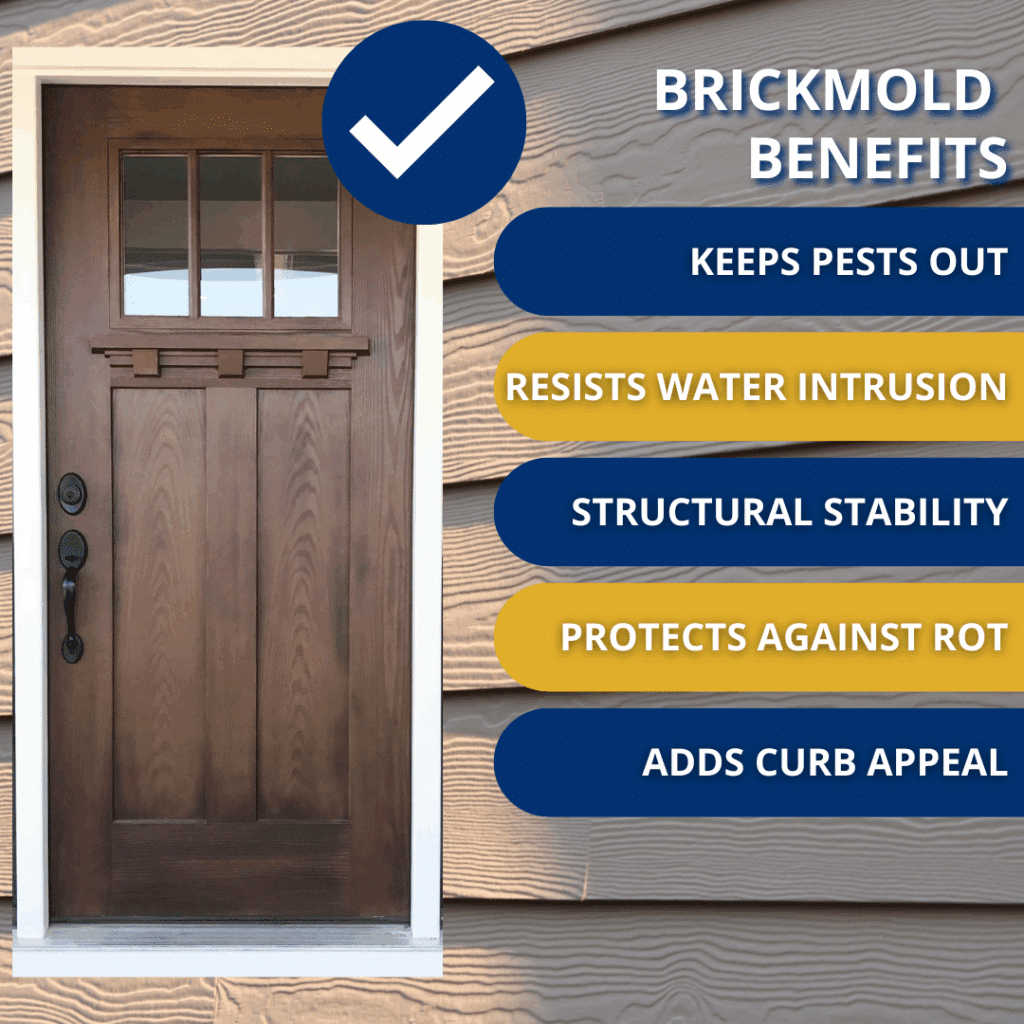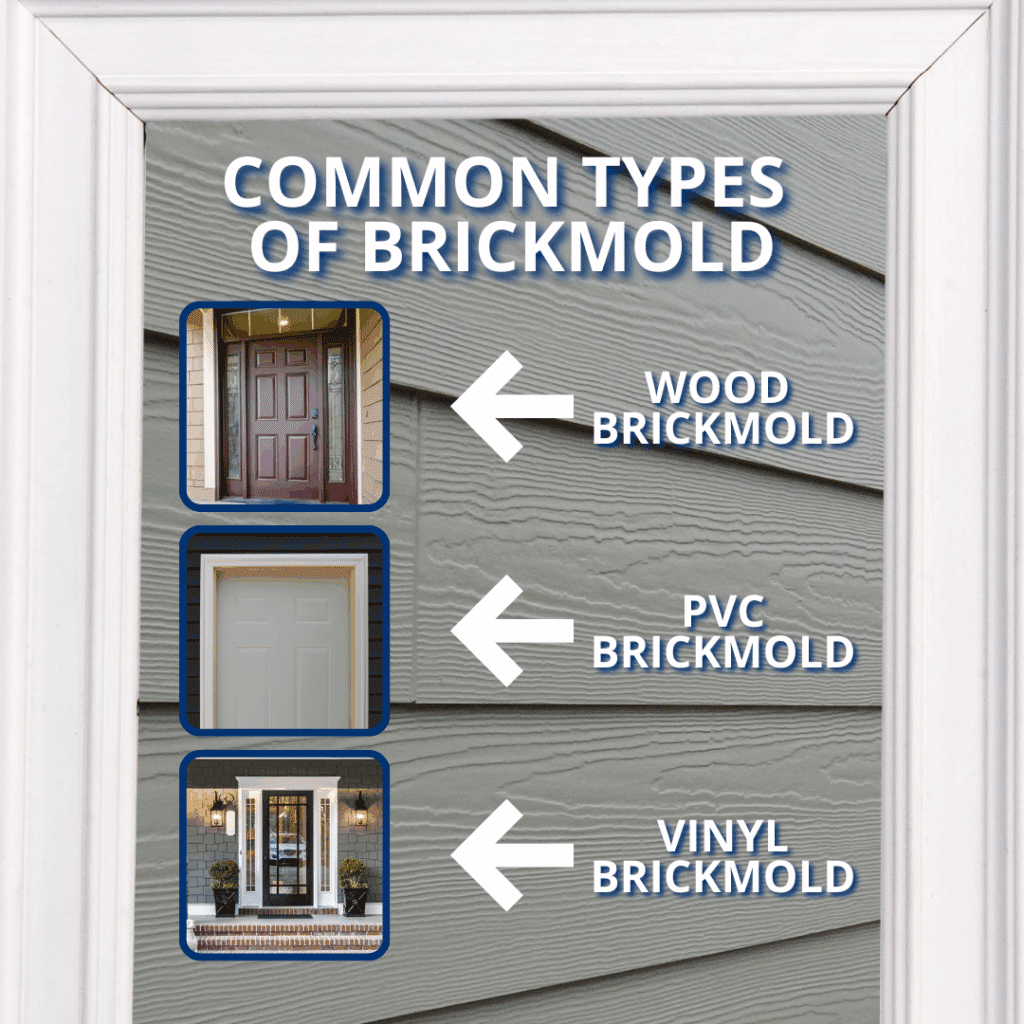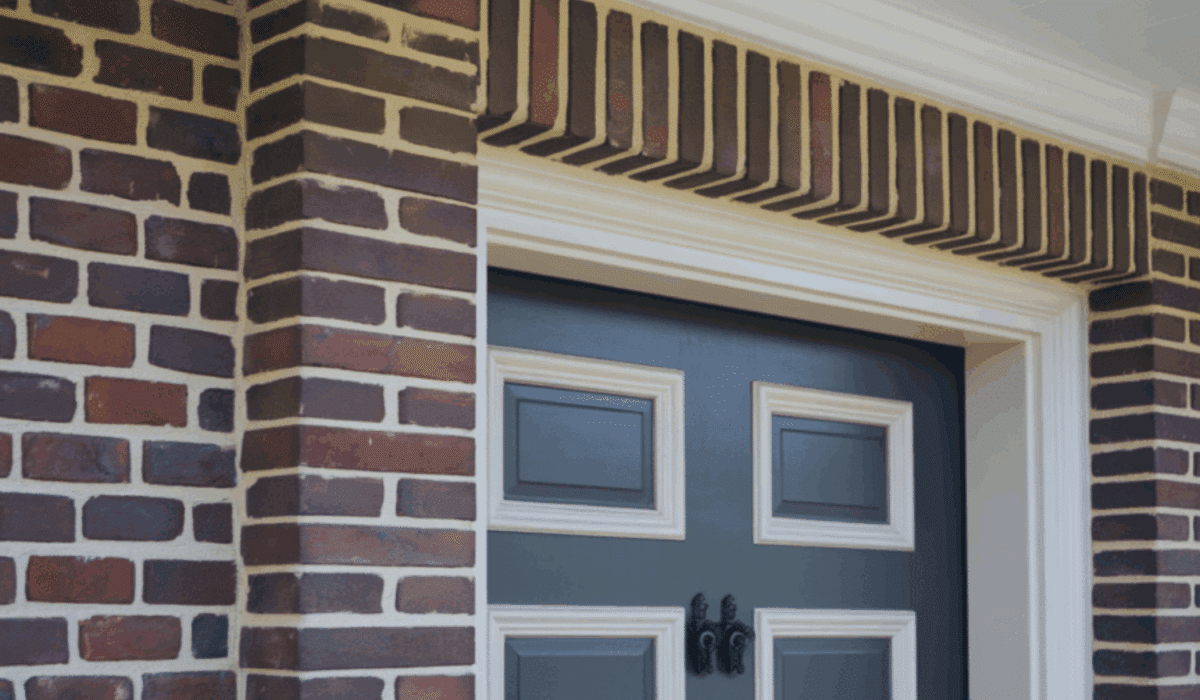Brickmold is the trim around doors and windows that helps seal gaps and keep water out. When it is installed correctly and kept in good shape, it protects your home from leaks, rot, and moisture damage.
In the Southeast, where heavy rain and high humidity are common, healthy brickmold helps prevent water from sneaking into the frame of a door or window. This guide explains what brickmold is, why it matters, and how homeowners can spot early moisture issues before they turn into bigger problems.
What Do Homes Have Brickmold?
Brickmold is a type of exterior trim that sits around a door or window frame. It covers the small gap between the frame and the wall. This gap needs protection because water can easily collect there during storms.
Homebuilders use brickmold for several important reasons:
- It closes the open space between the frame and siding or brick.
- It adds strength and stability to the frame.
- It gives the home a clean, finished look.

Why Brickmold Is Especially Common in the Southeast
Brickmold is especially common in Georgia homes because of regional building styles and the climate.
Many homes in the area use wood or composite trim that pairs well with brick or traditional siding. Because the Southeast gets frequent rain and humidity, builders rely on brickmold to provide extra protection around exterior openings.
Older homes in Metro Atlanta almost always include brickmold, and most new construction still uses it today.
How Brickmold Helps Prevent Water Intrusion
Brickmold helps block water from entering the gap between the home exterior and the frame of a door or window. It works together with caulk, siding, and flashing to form a protective barrier.
Here is how brickmold protects your home:
- It closes gaps where water can collect.
- It creates a smooth surface that helps water drip away.
- It blocks pests that can worsen rot.
- It supports the seal between the siding and the frame.
Inspectors often find moisture damage near doors and windows when brickmold is cracked or rotted.
Why Brickmold Matters More in Humid Climates
Georgia experiences long rainy seasons, hot summers, and high humidity. These conditions weaken exterior trim faster than in cooler or drier climates.
Common climate-related issues include:
- Paint breaks down faster in the sun and moisture.
- Caulk shrinks and cracks more often.
- Moisture stays trapped longer, which speeds up rot.
Because of this, brickmold in Georgia needs regular maintenance to stay in good condition.
Most Common Types of Brickmold in Georgia Homes
Wood Brickmold
Wood brickmold has a classic look and is often found on older homes. However, it is more likely to rot.
PVC or Composite Brickmold
This type of brickmold resists moisture and pests. It’s also popular in newer construction.
Aluminum or Vinyl Brickmold
This brickmold is low maintenance and often used on modern homes or manufactured homes.

What Causes Brickmold to Fail?
Brickmold can fail over time for several reasons:
- Age and weather
- Cracked or missing caulk
- Improper installation
- Wood rot or mold
- Pests
- High heat or moisture exposure
- Gaps caused by temperature changes
Once brickmold fails, water finds its way into the frame, which can lead to costly repairs.
Signs Your Brickmold Is Allowing Water Intrusion
Look for these warning signs to catch early moisture problems:
- Soft or crumbling wood
- Peeling paint
- Gaps around the trim
- Mold or staining inside the frame
- Doors or windows that stick
- Visible rot or dark spots
These signs are especially common in older homes that face constant rain and humidity.
How Brickmold Issues Impact Home Inspections
Brickmold problems show up often in home inspections across Georgia. These issues can affect a real estate transaction in several ways:
- Buyers may negotiate repairs when water intrusion is noted.
- Sellers may discover rot they did not see before listing.
- Moisture problems may delay closing until repairs are complete.
Because moisture can affect the structure of a home, inspectors highlight these findings in their reports.
Repairing vs Replacing Brickmold for Long-Term Protection
Some issues are easy to fix, while others require full replacement.
Repair Works Best When:
- Paint is peeling
- Caulk is cracked
- Only a small area is worn
Replacement Works Best When:
- Wood feels soft or spongy
- Mold or rot is visible
- The trim is loose or separating
- Water has reached the interior frame
Upgrading to composite brickmold can help reduce long-term moisture issues.
How Local Building Trends Influence Brickmold Choice
Construction styles in Metro Atlanta affect the type of brick mold used:
- Older brick homes often use wood trim.
- New construction leans toward PVC and composite materials.
- Remodeled homes often replace wood with moisture-resistant options.
- Homeowners are choosing composite materials for lower maintenance needs.
These trends help improve the durability of homes in humid climates.
How Home Inspectors Evaluate Brickmold
During an inspection, professionals look for:
- Gaps or separation
- Soft spots or rot
- Signs of termite damage
- Cracked caulk
- Interior moisture stains
- Evidence of water pooling nearby
Inspectors also use tools such as moisture meters to check for hidden water inside the framing.
How To Maintain Brickmold and Protect Your Home From Moisture
Regular care helps prevent moisture problems. Below is a simple seasonal checklist to follow.
| Season | Maintenance Tasks |
| Spring | Check for peeling paint. Recaulk any gaps. Look for swelling after winter rain. |
| Summer | Inspect for cracks caused by heat. Remove any signs of pest activity. Touch up paint if needed. |
| Fall | Repaint or reseal before cold weather. Check for gaps before heavy seasonal storms. |
| Winter | Watch for interior moisture stains. Clear away leaves and debris around doors and windows. |
Regional Market Trends Homeowners Should Know
Several trends affect how homeowners care for brick mold in the Southeast:
- More homeowners are choosing composite trim for moisture resistance.
- Repairs to exterior trim are becoming more common before listing a home.
- Buyers are paying more attention to moisture findings in inspection reports.
- Renovation professionals are recommending exterior upgrades to prevent water damage.
Related Questions
What causes water damage around doors?
Water damage usually happens when gaps form around the door frame or when brickmold, caulk, or flashing fail. A home inspection can identify the source before the damage spreads.
How can I prevent moisture intrusion in older homes?
Regular exterior checks, fresh caulk on windows and doors, and prompt trim repairs help protect older homes. An annual inspection helps catch hidden moisture early.
What exterior trim lasts the longest in humid climates?
Composite and PVC brickmold last longer in humid areas because they resist rot and termite damage. Inspectors often recommend these materials during repair projects.
How do inspectors check for hidden moisture?
Inspectors use visual checks, moisture meters, and thermal tools to spot water behind walls and trim. A full home inspection helps reveal hidden problems.
When does exterior wood rot and mold become a structural concern?
Rot and mold become a concern when they spread into the frame or support areas. An inspection can show whether the damage is surface-level or affects the structure.
Conclusion
Brickmold has an important job. It seals the gap between your home exterior and the frame around your doors and windows. In a climate like Georgia, where rain and humidity are common, keeping this trim in good shape helps prevent leaks, rot, and other moisture problems.
If you notice soft spots, gaps, or signs of water intrusion, getting a professional inspection is the best next step. Edifice Inspections can help you find issues early and guide you on repair or replacement options.


1 Comment
Comments are closed.